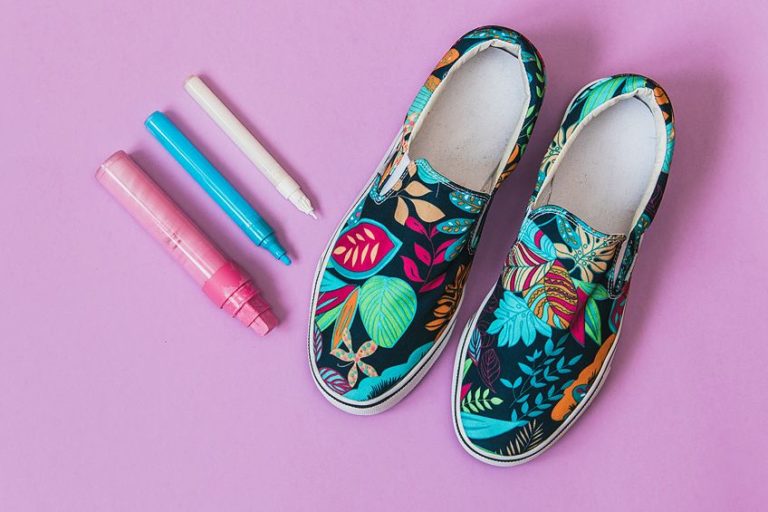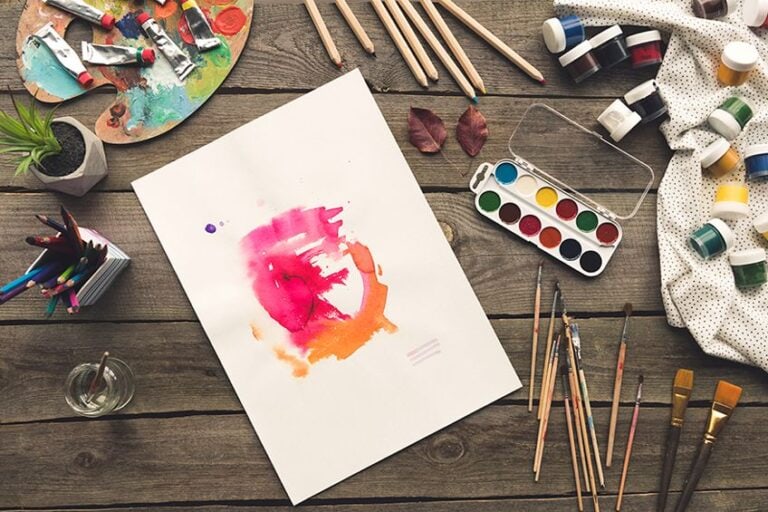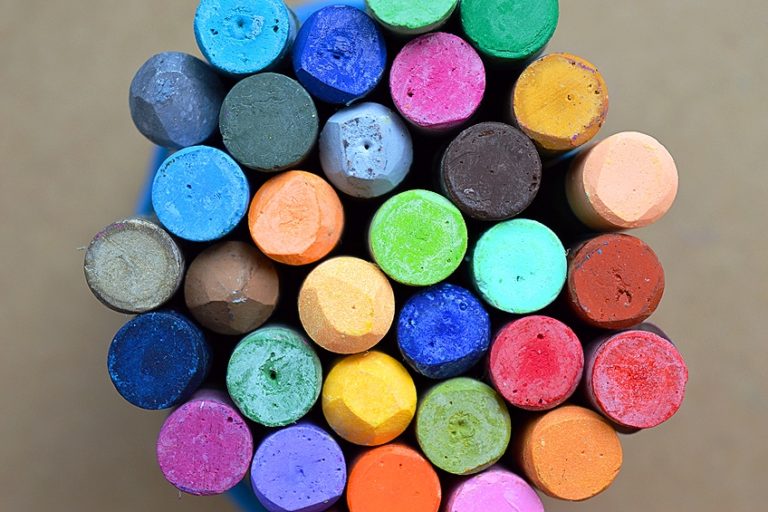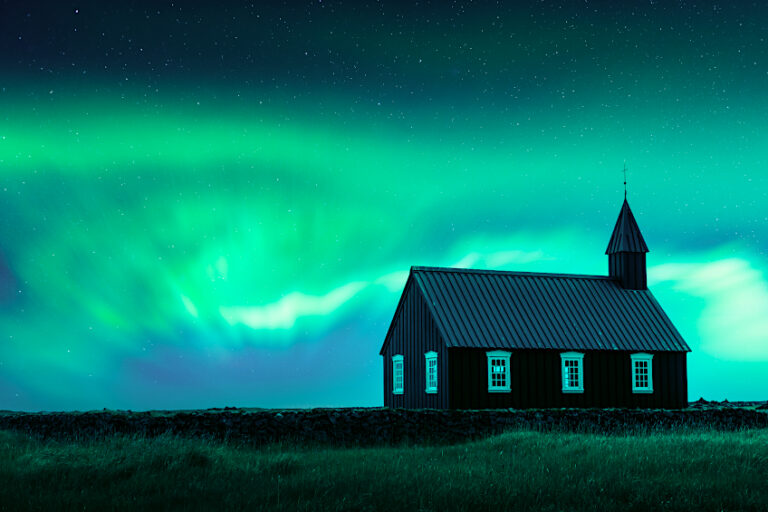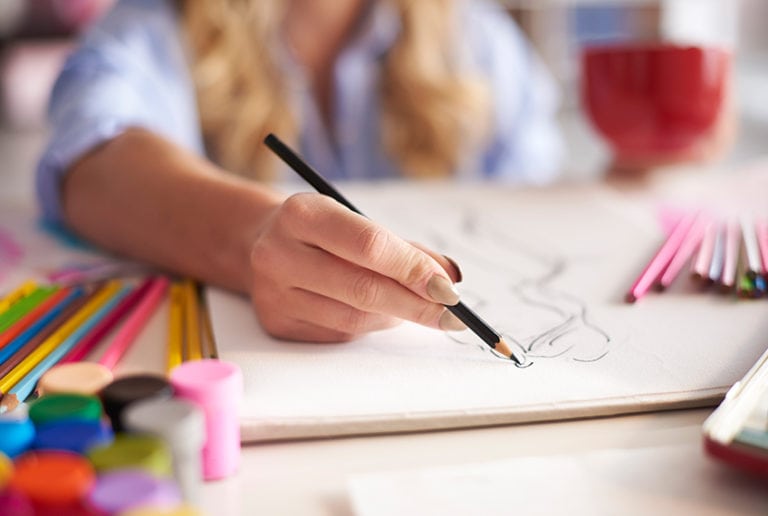What Colors Make Brown – Learning to Mix Different Shades of Brown
This post may contain affiliate links. We may earn a small commission from purchases made through them, at no additional cost to you.
Brown-colored paint might not seem very exciting when there is a world of bright, vibrant colors out there, but brown is necessary to painting especially if you are tackling subjects like wood and hair or other items found in nature. Shades of brown can add realism to a piece by grading them from light to dark in order to create shadows. Read on to learn how to create brown paint, and what colors are required to achieve it.
Table of Contents
Why You Need to Learn to Mix a Brown Color Palette
It is fun to experiment and mix colors to see what shades you get. Once you have learned the correct techniques for mixing colors, in particular brown, you will benefit greatly. Consult your color wheel when mixing colors; you do not need to buy a color wheel as you can find one online. Some of the main advantages to being able to mix colors correctly include the following:
- You will be able to paint more realistically.
- It can improve creative thinking skills and problem-solving skills in both children and adults.
- You will waste less paint and save yourself money, as you will be able to achieve an assortment of colors using a basic set.
- You will not always be able to get the color you want in a tube.
- Overall, the process will aid you in becoming a better painter.
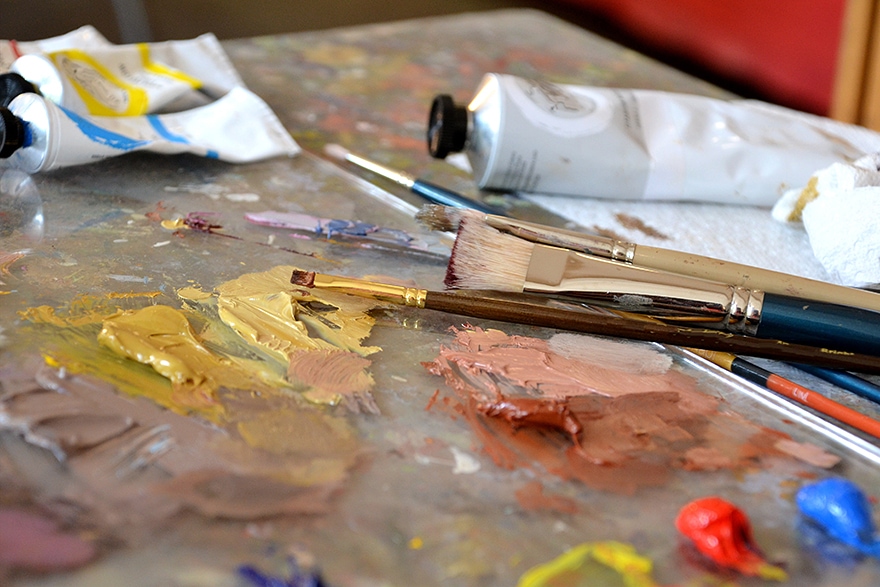
Brown Color Palette
Brown describes an array of intensities and shades; it is important to remember that everybody sees colors differently, and so each shade can be subjective. Brown can be light or dark, or an assortment of hues in between, while also being cooler or warmer. That being said, it is primarily identified as warmer, thanks to its base colors being orange and yellow.
Brown can be measured by its:
- Saturation or Intensity: This refers to whether a color is grey and dull or vibrant.
- Hue: This is the most prominent color group, i.e., the primary hues are yellow, red, and blue.
- Color Value: This is the darkness or lightness of a color or shades.
You are able to alter the value of a color by adding black or white. To change the intensity to duller or brighter, you can combine a color with its complementary color.
How to Make Brown Paint Darker or Lighter
The obvious choice to make your brown paint darker is to use black paint. Despite it not being part of the primary color group, black is more often than not included in color paint sets. Make sure you only use a very small amount of black paint to darken your brown color; if you add too much, you will be unable to lighten the paint and will have to begin again.
Another option is to use dark blue paint, which will give you a chocolate brown color that is ideal for painting evening scenes. Other recommendations to use in order to darken your brown paint include Ultramarine Blue or Dioxazine Purple. To lighten your brown paint, you can use a small amount of white opaque paint. Just add a little amount at a time, as you can always add more to further lighten your paint.
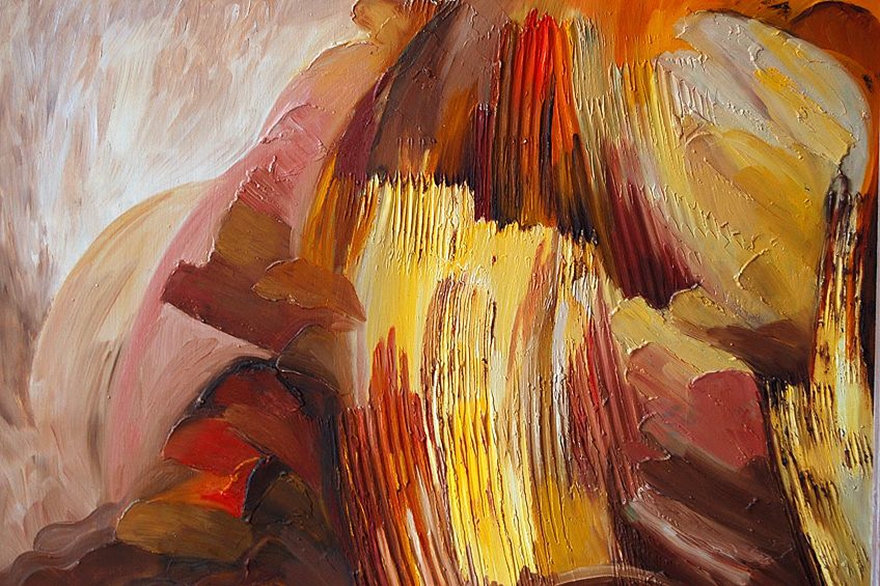
How to Make Brown Paint Seem Warmer
The temperature of color is something you need to understand so as to create depth and mood. Most yellows, oranges, and reds are thought of as warm colors, and blues and greens are thought of as cool colors. Using this thinking, to create a warm brown you would add more red, orange, or yellow, and to create a cool brown you would add more blue or green.
By warming your brown paint, you will create bolder colors that are great for painting outdoor and nature scenes. When adding color to your brown paint always add it little by little until you get the shade you are looking for. Should you add too much red, for example, you can always then add a little blue to balance the color out.
When adding blue to your brown paint, you create a cooler color. Your color will be darkened and can be used to paint shadows, which is ideal for forest scenes. Similarly, if you have added too much blue, you can balance it out by adding a little red or yellow color.
The Colors Required to Make Brown
There are a number of different ways to create brown, and to try them out it is beneficial in learning to comprehend the various types of colors. The number of different colors, intensities, and shades that are available is astounding. To view the colors, you can consult a color wheel, which is an illustration in a circular shape that shows the color hues. Through consulting the color wheel, you can identify the relationship between the different primary, secondary, and tertiary (complementary) colors. Having a good understanding of the colors’ relationships will allow you to create stunning, unique pieces of art.

Primary Colors
Most painting kits contain the primary colors, which are blue, red, and yellow. Using these three colors, you can create an assortment of colors, including brown. The easiest way to create the color brown is to combine equal portions of all three primary colors.
Once you have created brown, if you wish to lighten it you can add opaque white. To achieve different hues and shades of brown, you simply add different proportions of colors. Thus, you will be able to achieve dark to light brown, red-brown, green-brown, and so on.
Secondary Colors
To achieve the three secondary colors, you once again combine the primary colors. The secondary colors are oranges, greens, and purples. To create these colors, you combine the primary colors as follows:
- Yellow and red will give you orange;
- Blue and yellow will give you green;
- Red and blue will give you purple.
Complementary Colors
The color wheel helps you see which colors complement each other; complementary colors are on opposing sides of the color wheel. You are able to create brown by combining all the complementary colors, and they can be utilized to decide the strength of a color. So, through mixing different complementary colors, you can create an assortment of brown shades. The complementary colors can be found on the color wheel as follows:
- Orange is opposite from blue;
- Purple is opposite from yellow;
- Green is opposite from red.
Combining complementary colors will give you an assortment of different shades of brown. An easy way to know which colors are complementary is to note that the secondary colors of orange, green, and purple will have a complementary primary color that is not in use. In other words, the complementary color for orange is blue (yellow and red make orange, which leaves the color blue). Therefore, the secondary complementary colors are:
- Orange and blue;
- Green and red;
- Purple and yellow.
These are just the standard colors, although there are of course an assortment of color gradients in-between. Remember that regardless of the shade or hue, the color opposite it on the color wheel will always be the complementary color.
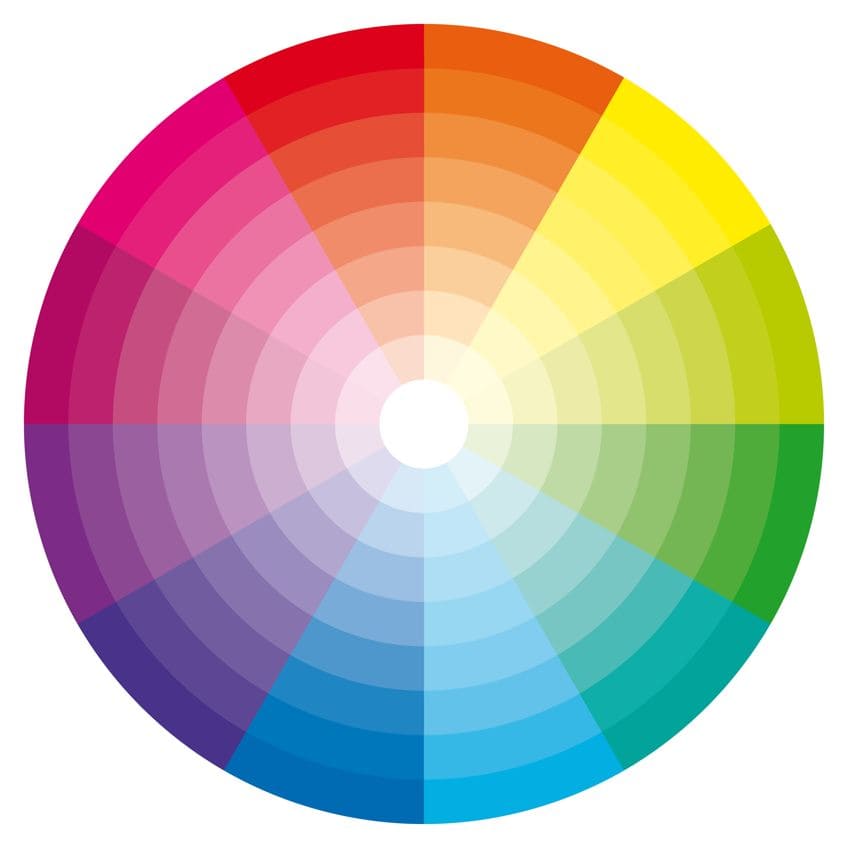
Mixing Brown Paint for Watercolors
To mix brown watercolors, you can mix the shades of brown on a plate or tray – simply create a small puddle of water in your tray and then begin adding your color. Ensure that you use enough water so that you will be able to cover the surface space you want to paint. Add other colors and experiment until you achieve the shade you are looking for. We suggest testing the color out on a test surface before applying it to your painting. As watercolors dry quickly, mix as you paint.
When you have built up your confidence painting with watercolors, you can always try your hand at mixing your watercolor paints directly on the painting you are working on instead of first combining the colors on a tray or palette. Remember that when using this method, should you make a mistake it cannot be fixed and your painting could be ruined, so only attempt this when you have gained more experience.
One way to make brown is to take orange paint (which is made up of yellow and red) and simply add blue, which will give a brown color. This is just one way to create brown, so go ahead and experiment.
If the brown you have created is too yellow, try adding some purple or red, which will give you a richer color. Or, if it is too blue, add some red or orange to create a honey-colored shade or a caramel. With time, you will be able to make the shade of brown you require quickly and expertly.
How to Create Brown Acrylic Paint
Brown paint is a necessary color to paint an assortment of subjects, such as painting hair, skin, and trees. It is easy to mix brown acrylic paint using your primary colors, although in order to do so, you will need the following supplies:
- Acrylic paint (namely your primary colors and some opaque white);
- Paintbrush(es);
- Kitchen towels and water;
- Palette;
- Palette knife;
- Surface to test your color as you work.

Put equal amounts of yellow, red, and blue paint directly onto your palette, ensuring that there is space between each color. If you would like, you can also place a dollop of white paint on your palette. Combine equal portions of the primary paint colors, mixing them with your palette knife. The colors will combine and slowly turn a muddy brown in color. When you have mixed all the colors together, you will have a brown color paint. To lighten the paint, you can add a small amount of white paint, which will also help the paint go further on the canvas.
If you have achieved the color you desire, you can start painting, but should you wish to have a different intensity or shade of brown, you will have to alter the color accordingly. To change the color, you can add more of the primary colors or white until you get the shade you want. Try the color out as you mix on your test surface until you are happy with the color. When you have achieved your desired color, you can then begin painting on your canvas.
The above is a general guide on how to make brown paint, but note that there are a large number of different shades of brown. Go ahead and experiment on your own and you will be able to create an assortment of shades and hues.
Frequently Asked Questions
How Can I Make the Color Brown?
You can make the color brown by blending all the primary colors. Alternatively, you can mix your secondary colors with their corresponding complementary colors.
Is Brown a Cool or Warm Color?
The colors that make up and surround brown can have an impact on whether the brown is considered to be warm or cool. If the brown is painted next to blue, then the brown can be seen as cool. However, brown on its own is thought of as a warm color, as it is made up of two warm colors (red and yellow) and only one cool color.
How Do You Make a Pale Tan Color?
Once you have made your brown color, you can add either white or yellow to create a light tan color.
What Two Colors Make Brown?
Brown can be made by mixing complementary colors, which is a mixture of a primary color and the color directly opposite it on the color wheel. You can mix blue and orange, red and green, or yellow and purple in order to make a brown color.
How Can I Turn a Caramel Color into a Dark Brown?
Adding a dark brown to your caramel color will turn it into a dark brown color. You can create a dark brown color by combining red and green.
Is It Possible to Turn Gray into Brown?
Simply add some red, blue, and yellow to your gray color to turn it brown. Experiment how much of each color you add to reach the hue you require.
Larissa Meyer is a 32-year-old mother from Michigan and creative spirit since childhood. Her passion for painting and drawing has led her to an education as an illustrator and a career as a freelance graphic designer. She has a Bachelor of Fine Arts in Illustration and a degree in Graphic Design. Larissa is a talented artist who is able to master a wide range of styles and techniques to bring her artistic vision to life. Her greatest passion is currently fluid painting and epoxy resin art. Larissa’s love for art and her knowledge and experience in illustration make her the perfect Creative Director for our fluid-painting.com team. She is the creative head of our team and shares her passion and knowledge with our community through articles and tutorials.
As a mother of a 2-year-old daughter, Larissa also understands the importance of fostering creativity in early childhood. She uses her experience and knowledge to help other parents inspire their children and develop their artistic skills as well.
Learn more about Larissa Meyer and about us.



